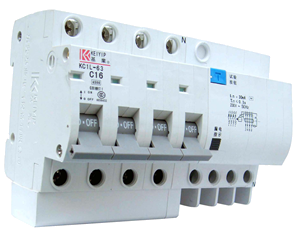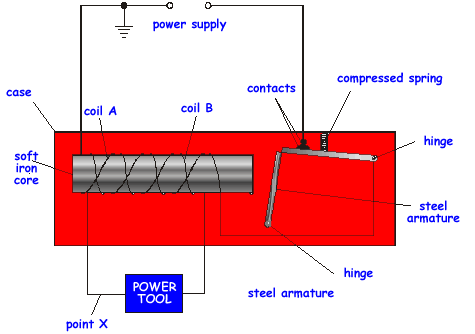Residual Current Circuit Breakers (RCCBs)
AC Residual current circuit breakers work by comparing: the current entering the appliance via the live wire with the current leaving the appliance through the neutral wire.
The live wire and the neutral wire are wound around iron cores in opposite directions. When the appliance is working correctly all the electrical current entering the appliance via the live wire leaves the appliance through the neutral wire and the magnetic fields generated around the iron cores cancel each other out.
When there is a fault some of the electric current will flow through the earth wire (this is often a thick copper braid - very low resistance path) or in the absence of earthing through the body of the user. This results in an imbalance between the current entering the appliance through the live wire and the current exiting through the neutral wire. This difference in electrical current is called the residual current. This difference means a decreased electrical current in the neutral wire compared to that in the live wire. That results in a weaker magnetic field around the neutral wire than the live wire has. The two magnetic fields do not cancel each other out and the iron pivot is attracted to the live wire breaking the circuit. Residual Current Circuit Breakers have the advantage of being highly sensitive and have a very quick response time. The diagram below is of a DC arrangement
The power tool, coil A and coil B are all in the same series circuit. Coils A and B are wound in opposite directions around the soft iron core. Therefore when there is no current leakage from either side of the power tool the magnetic fields produced by the coils cancel each other out. If the wire was accidentally cut through at point X this balance would be disturbed. There would therefore be a net magnetic field. The steel armature would be attracted to the core. It is fixed at the hinge points - therefore it will 'bend' at a different angle at the joint as the armature moves to the left. This would result in a break in the electrical contacts. |
Follow me...
|







